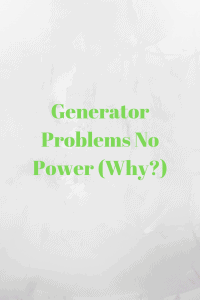It depends upon the power factor of the load. • calculate the synchronous reactance in ohm. Internal generated voltage of a synchronous generator the magnitude of internal generated voltage induced in a given stator is e n f ac 2 k where k is a constant representing the construction of the machine, is flux in it and is its rotation speed. Cu + iron + mech + stray = copper, iron, mechanical & stray losses in a generator. P in = input power;

Cu + iron + mech + stray = copper, iron, mechanical & stray losses in a generator.
Voltage regulation of a synchronous generator. The voltage regulation of a synchronous generator is the rise in voltage at the terminals when the load is reduced from full load rated value to zero, speed and field current remaining constant. V nl = voltage at no load; For unity and lagging power factors, there is always a voltage. Related formulas and equations posts: Normally, a constant terminal voltage supplied by a generator is desired. V fl = voltage at full load; Since flux in the machine depends on the field current through it, the internal generated voltage is a function of the Note that neutral is available in star connection but not delta connection. P in = input power; Internal generated voltage of a synchronous generator the magnitude of internal generated voltage induced in a given stator is e n f ac 2 k where k is a constant representing the construction of the machine, is flux in it and is its rotation speed. Η = (p out / p in) * 100%. P out = output power;
It depends upon the power factor of the load. Note that neutral is available in star connection but not delta connection. V fl = voltage at full load; Η = (p out / p in) * 100%. P out = output power;

• a synchronous generator operating at a leading power factor often has a negative voltage regulation.
For unity and lagging power factors, there is always a voltage. Internal generated voltage of a synchronous generator the magnitude of internal generated voltage induced in a given stator is e n f ac 2 k where k is a constant representing the construction of the machine, is flux in it and is its rotation speed. Cu + iron + mech + stray = copper, iron, mechanical & stray losses in a generator. P out = output power; Related formulas and equations posts: Voltage regulation of a synchronous generator. The voltage regulation of a synchronous generator is the rise in voltage at the terminals when the load is reduced from full load rated value to zero, speed and field current remaining constant. It depends upon the power factor of the load. Since the armature reactance cannot be controlled, an obvious approach to adjust the terminal voltage is by controlling the internal generated voltage e a = k. • calculate the synchronous reactance in ohm. Since flux in the machine depends on the field current through it, the internal generated voltage is a function of the Η = (p out / p in) * 100%. P in = p out + p cu + p iron + p mech + p stray.
Voltage regulation of a synchronous generator. For unity and lagging power factors, there is always a voltage. Since the armature reactance cannot be controlled, an obvious approach to adjust the terminal voltage is by controlling the internal generated voltage e a = k. P in = input power; P in = p out + p cu + p iron + p mech + p stray.

• a synchronous generator operating at a leading power factor often has a negative voltage regulation.
Since the armature reactance cannot be controlled, an obvious approach to adjust the terminal voltage is by controlling the internal generated voltage e a = k. Since flux in the machine depends on the field current through it, the internal generated voltage is a function of the • a synchronous generator operating at a leading power factor often has a negative voltage regulation. Note that neutral is available in star connection but not delta connection. Normally, a constant terminal voltage supplied by a generator is desired. Cu + iron + mech + stray = copper, iron, mechanical & stray losses in a generator. Internal generated voltage of a synchronous generator the magnitude of internal generated voltage induced in a given stator is e n f ac 2 k where k is a constant representing the construction of the machine, is flux in it and is its rotation speed. Voltage regulation of a synchronous generator. It depends upon the power factor of the load. • calculate the synchronous reactance in ohm. P in = p out + p cu + p iron + p mech + p stray. Η = (p out / p in) * 100%. V nl = voltage at no load;
View Synchronous Generator Line Voltage Pictures. Related formulas and equations posts: P out = output power; • a synchronous generator operating at a leading power factor often has a negative voltage regulation. Normally, a constant terminal voltage supplied by a generator is desired. V nl = voltage at no load;

